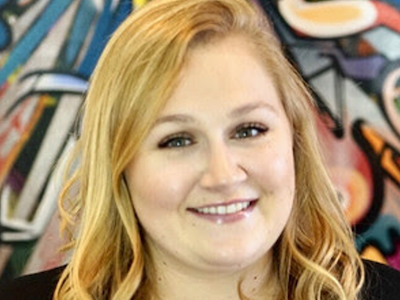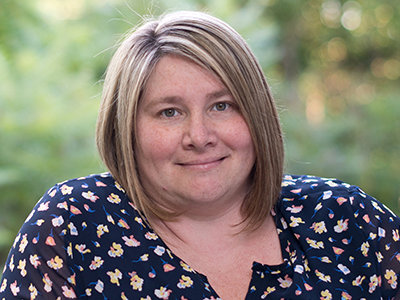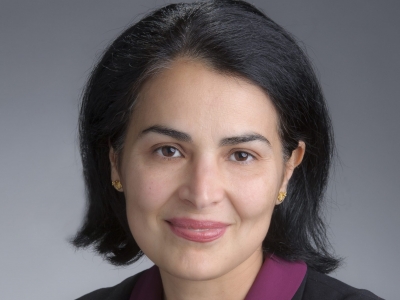Australia suffered several months of catastrophic bushfires that finally ended in March 2020, but not before 19 million hectares and 3,500 homes were burned out, 35 people (including 14 firefighters) were killed and nearly three billion animals died. The philanthropic response to the carnage was extraordinary: 53% of Australian adults, joined by philanthropists, corporations and celebrities from around the world, raised an estimated AUD$500 million (roughly CAN$480 million). Dozens of superstars, in particular, stepped up: Leonardo DiCaprio (US$3 million via Earth Alliance), Ellen DeGeneres, (US$1.1 million) and, most noteworthy, Australian comedian, Celeste Barber, who ended up catalysing the most successful Facebook fundraiser in history, followed by mass confusion and legal consequences.
The Celeste Barber effect
Barber, an Instagram star, created a Facebook fundraiser on Jan. 3, 2020, after her family was evacuated from their home near the fires in New South Wales (NSW). The fundraiser target was AUD$30,000, but within a day, she raised nearly $2 million – and by the time she closed the page, on Jan. 17, she’d raised $51 million from 1.3 million people, making it the largest fundraiser ever held on Facebook. Early in the appeal, a small group calling itself #fundraiserfail gang warned Barber that the designated charity wouldn’t be able to meet the expectations of donors, but she dismissed the group, saying, “Why raise this money if it’s not going to go to the people who absolutely need it?” And that’s when the problems began.
 The charity named on Facebook
The charity named on Facebook
The Facebook fundraiser page named a registered charity as the recipient of the money: The Trustee for the NSW Rural Fire Service & Brigades Donations Fund. If donors followed the Facebook links to the charity’s page on the website of the Australian Charities and Not-for-profits Commission (the charity regulator), they would read that this charity helps “people in rural/regional/remote communities; victims of disaster; general community in Australia,” and that it operates in New South Wales.
If donors poked deeper, they’d find a pdf of the Fund’s governing document, which sets out its much narrower, legal mandate: “to meet the costs of purchasing and maintaining fire-fighting equipment and facilities, providing training and resources and/or to otherwise meet the administrative expenses of the Brigades which are associated with their volunteer-based fire and emergency services activities.” Again, in New South Wales. The Fund solely supports the NSW Rural Fire Service, a state agency and the world’s largest volunteer fire service, with more than 71,000 volunteers, 900 full-time staff and nearly half a billion dollars in annual revenue. As a NSW government agency, the Fire Service doesn’t qualify as a tax-deductible body for charitable gifts. However, it established the Fund, which does qualify – and the Fund was the only charity named in the Facebook fundraiser.
Mass confusion in Australia
The first questions about who would benefit from the donations emerged on the second day of the appeal, in Facebook comments responding to an update Barber had posted. The next day, on her Instagram account, Barber wrote that she’d “make sure that funds get spread around the country to help people and wildlife affected by the fires.” (Aside from the state of NSW, the neighbouring state of Victoria, as well as South Australia and other parts of the country were severely affected.)
However, a few weeks later, the Fund issued a media statement: “We know that people want to know how the money will be spent. We take the responsibility of community donations very seriously and we want to make sure the money is put to good use. The NSW RFS Brigades and Donations Trust has a specific purpose and people have donated for this intent – to support volunteer brigades with equipment, training and resources relating to their emergency service role. Funds must and will be used for this purpose.”
In spite of this statement, several media articles focussed on the need for donors to check before donating to online fundraisers fronted by celebrities, creating more confusion. Australian charity and consumer regulators didn’t intervene when public concerns were raised. Soon, articles suggested that court intervention might be necessary, and there were reports that both Barber and the Fund were planning to seek direction from the NSW Supreme Court. Barber was reported as saying: “I’m going to make sure that Victoria gets some, that South Australia gets some, also families of people who have died in these fires, the wildlife.” This was in spite of the fact that the Fund works only in NSW, not other states. In response, the Fund filed an application seeking judicial advice.
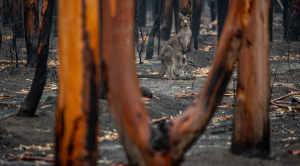 Things get funky with Facebook and PayPal
Things get funky with Facebook and PayPal
In Facebook fundraisers, the PayPal Giving Fund (itself a charity) collects donations, under extremely detailed terms and conditions, and then disperses the funds to the recipient charities named by the organizers. Do donors actually read these terms and conditions? In the Barber appeal, they were not always easy to locate, and how to ‘learn more’ differed if viewed on a mobile phone versus a desktop computer.
PayPal quickly dispatched the donations to the Fund. Some might say this was to prevent it from being embroiled in litigation, given that it had just reached a settlement with the US Attorneys General in several states about inadequate disclosure to donors. In any event, the Fund then immediately allocated $20 million of the $51 million to volunteer firefighter matters — and it planned to distribute the rest, pending the court decision.
The court steps in
A judge was asked to decide: could the money from the fundraiser be directed to other charities? If not, could the Fund be used for broader purposes than those stated in its legal mandate? In May, 2020, the NSW Supreme Court was decisive: the money could go to only the Fund, and only for the purposes in its legal mandate, mainly involving training volunteer firefighters in rural areas and supporting volunteer firefighters who are injured on the job.
In short, Facebook comments by donors stating they wanted to support fire victims and communities didn’t mean much, and PayPal’s “terms and conditions” won out. When donors had made their payments to PayPal, via Barber’s Facebook fundraising page, they’d agreed to PayPal Giving’s terms and conditions, which named the Fund as the recipient charity, “despite what donors later may have hoped or intended might be done with the money.”
Barber later told her supporters: “Turns out that studying acting at university does not make me a lawmaker.”
What else could be done?
The court had to address narrow questions relying on trust law. Clearly, creating flexibility to direct some of the Barber fundraiser funds to victims and affected communities wouldn’t happen through the courts. One alternative was legislation that would amend the Rural Fires Act 1997 (NSW), the legal authority behind the Fire Service and the Fund, to allow greater flexibility in how the donations could be directed. The other option – noted explicitly by the court – is for individual donors to sue PayPal Giving on the basis that they had stated on Facebook they wanted their donations to go to a different cause or charity. Given the high costs of litigation and the fact that PayPal Giving had quickly passed on the funds, no donor has taken up this option.
However, a bill has been introduced into the NSW Parliament by a Greens party member to amend the Rural Fires Act 1997 (NSW). In her submission to the parliamentary committee overseeing the bill, Barber noted: ”Understandably, I started the fundraiser to help my family, with a goal of 30K, then when it surpassed tens of millions of dollars, and the fires kept raging and the devastation was unfathomable I absolutely thought it would be possible for this huge amount of money to be shared.”
She also explained the challenge of changing course once crowdfunding goes viral: “It was suggested to me that I open up a number of additional fundraising pages so the money could go to other charities. I didn’t know what to do as I feared that if I closed this particular fundraiser down and started another one the momentum might have been lost.”
 Barber also reflected how her own reputation and trust of her supporters – more than 10 million people online – had been damaged. “It is my name being used in the courts and throughout international media channels,” she said. “I have lost count of how many times I have heard and read the word ‘unprecedented’ used when referring to the money raised. Maybe something that we have never seen before deserves the consideration of a change of rules in this unprecedented instance.” And she issued a caution about taking such generosity for granted: “My concern is that if it is not possible to help these people have their money allocated to where they want it to go in this unprecedented instance that this may be the last we see of such generosity on such an international scale.”
Barber also reflected how her own reputation and trust of her supporters – more than 10 million people online – had been damaged. “It is my name being used in the courts and throughout international media channels,” she said. “I have lost count of how many times I have heard and read the word ‘unprecedented’ used when referring to the money raised. Maybe something that we have never seen before deserves the consideration of a change of rules in this unprecedented instance.” And she issued a caution about taking such generosity for granted: “My concern is that if it is not possible to help these people have their money allocated to where they want it to go in this unprecedented instance that this may be the last we see of such generosity on such an international scale.”
The Committee’s July 2020 report recommended further debate by Parliament to address legal concerns of some witnesses. That has yet to happen. Meanwhile, the $51 million is being distributed by the trustees of the Fund on new equipment, training, and assistance for injured volunteers. Some might argue this has relieved the NSW government of the burden of this expense.
During the bushfires, over 500 fraudulent scams were reported to the Australian Competition and Consumer Commission. The vast majority of fundraising activities during the 2019-2020 bushfires had been through online and digital mechanisms. Government should consider whether additional regulatory responses are required to address online-fundraising fraud risk.
— Royal Commission on Natural Disaster Arrangements, Australia (Oct. 2020)
Lessons for crowdfunding in Canada
This is a case of good intentions, generosity and emotions colliding against legal constraints in the absence of regulation of online crowdfunding. Among the lessons:
- Organizers need to think carefully about which charities they designate as recipients of their crowdfunding campaigns, and understand what these charities are legally allowed to do. No matter what organizers claim, these legal requirements restrict what’s possible. Donors, too, need to understand these limitations and educate themselves about the recipient charities. In Canada, information is available from the Charities Directorate, Canada Revenue Agency or CanadaHelps, as well as on most charities’ own websites.
- Charities should be required to authorize fundraising on their behalf and be responsible for dealing positively with false or misleading conduct by their fundraisers.
- Consumer and charity regulators, particularly the Attorney General who has the historical role of Crown protector of charities, should act to protect charities and donors – particularly during times of disaster, when emotions may override rational decision making.
- Paypal Giving, Facebook and other online donation platforms should make their terms and conditions clear. Currently, this fine print is onerous and is far in excess of what’s necessary to protect Paypal – and it advantages PayPal over donors. In addition, the fine print needs to be more consistent across jurisdictions. In an international appeal, such as Barber’s, the terms and conditions differ, depending on the jurisdiction of the donor, causing legal and practical difficulties.
- An agreed industry code of conduct for online fundraising platforms, a code that spans jurisdictions and is fair to all parties, would be a significant advance.
- Canadian regulation needs to adapt to the world of crowdfunding. Saskatchewan is the only province with legislation that provides special guidance to online fundraisers and allows for judicial intervention in disputes. In August 2020, a Uniform Benevolent and Community Crowdfunding Act, 2020, was adopted by the Uniform Law Conference of Canada that will modernize oversight and extend to other provinces. This is an important step forward.
Myles McGregor-Lowndes is Founding Director and Emeritus Professor, Australian Centre for Philanthropy and Nonprofit Studies, Queensland University of Technology, Brisbane. He’s co-editor (with Bob Wyatt) of “Regulating Charities: The Inside Story” (2017), and writes extensively on nonprofit law, and regulation and taxation, including a series of case commentaries. Photos are courtesy of Pixabay (firefighters), Jo-Anne McArthur (kangeroo) and Terri Sharp (forest fire).
Sign up for PANL Perspectives' free, monthly newsletter
Friday, October 2, 2020 in Online Fundraising, Public Policy & Advocacy
Share: Twitter, Facebook
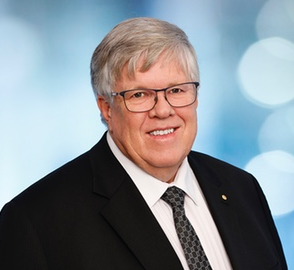 By
By 